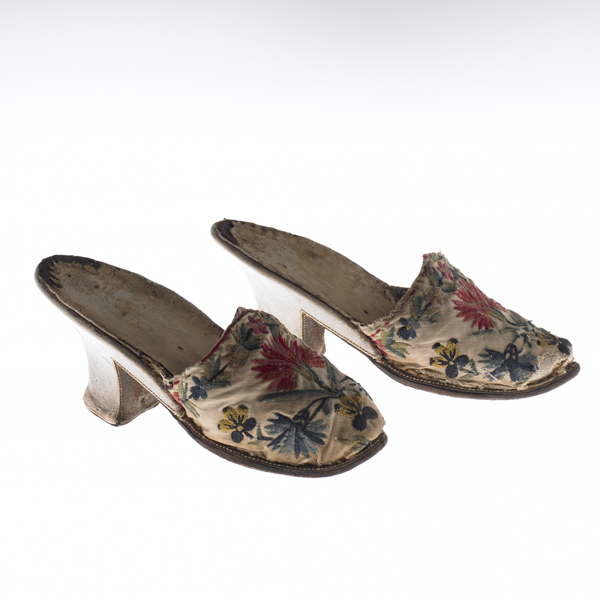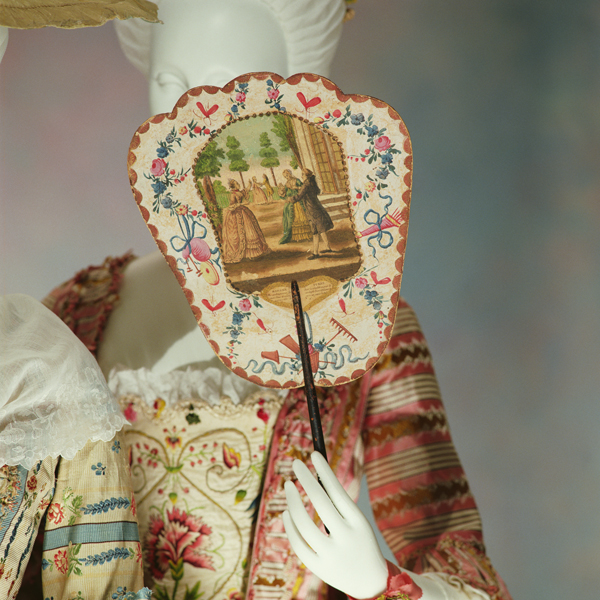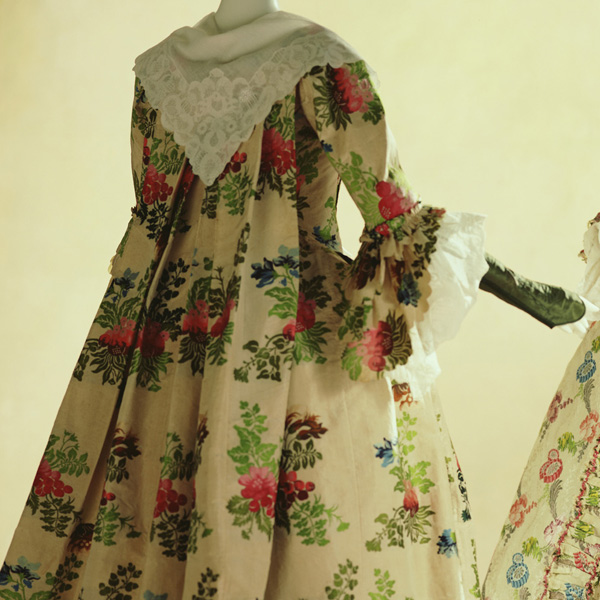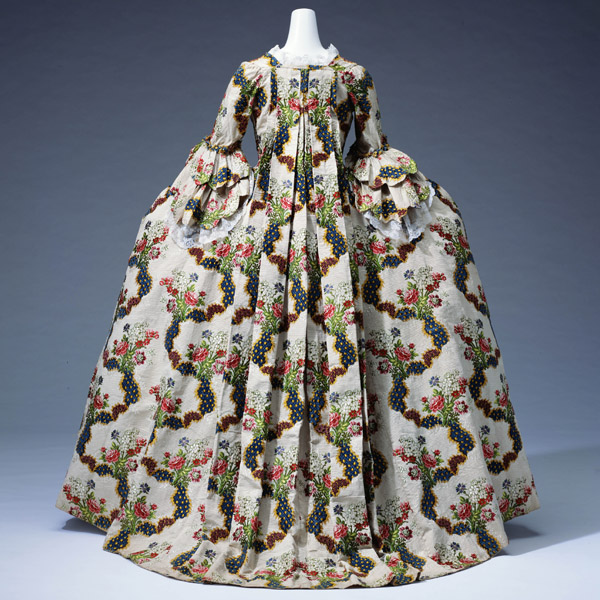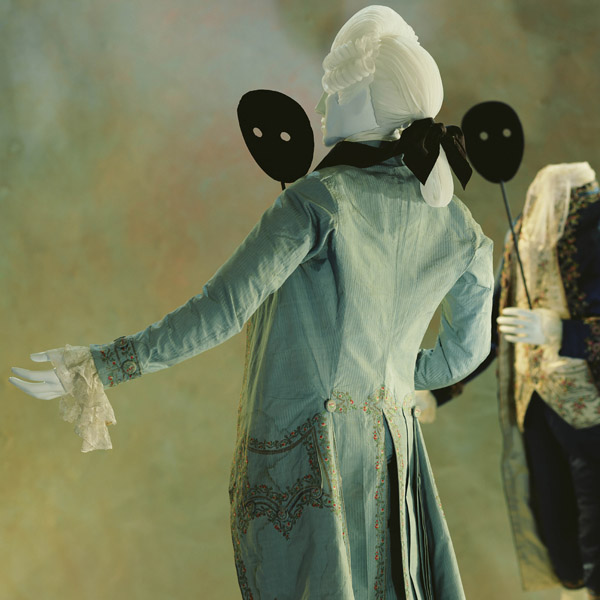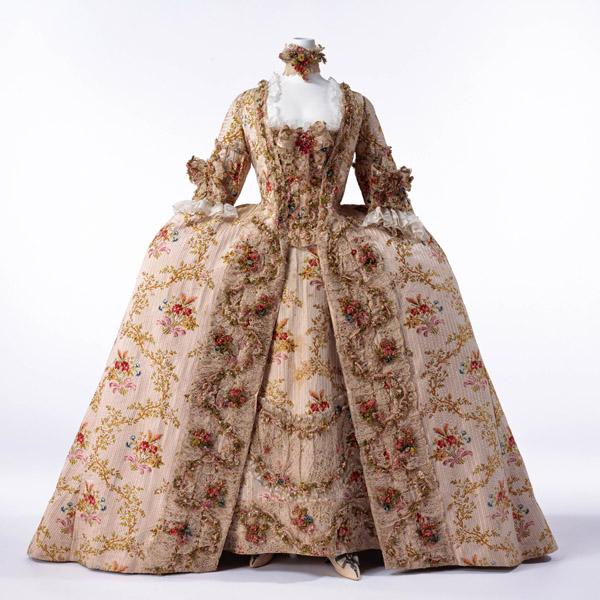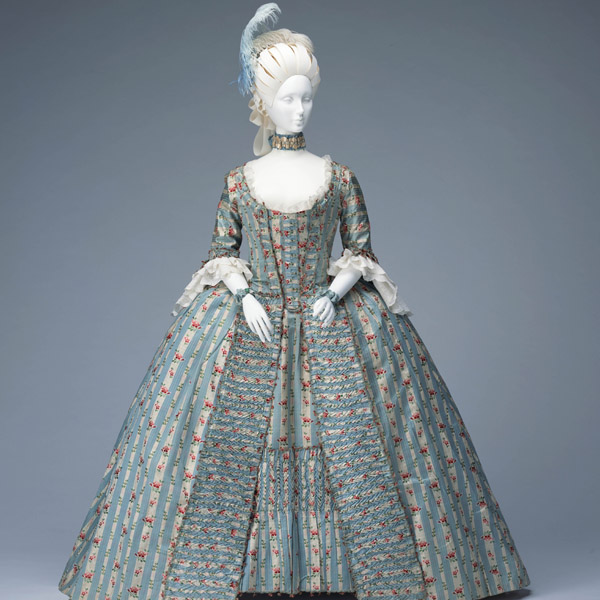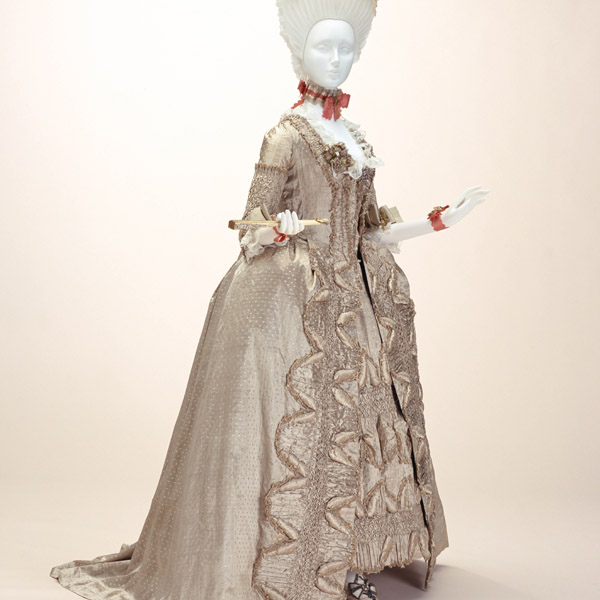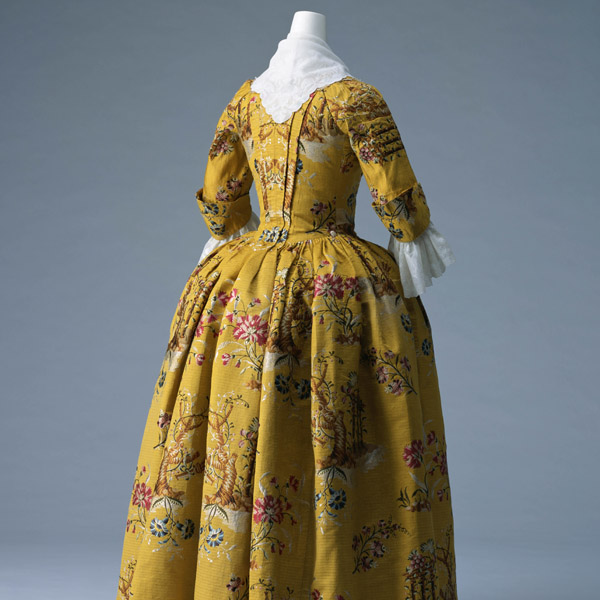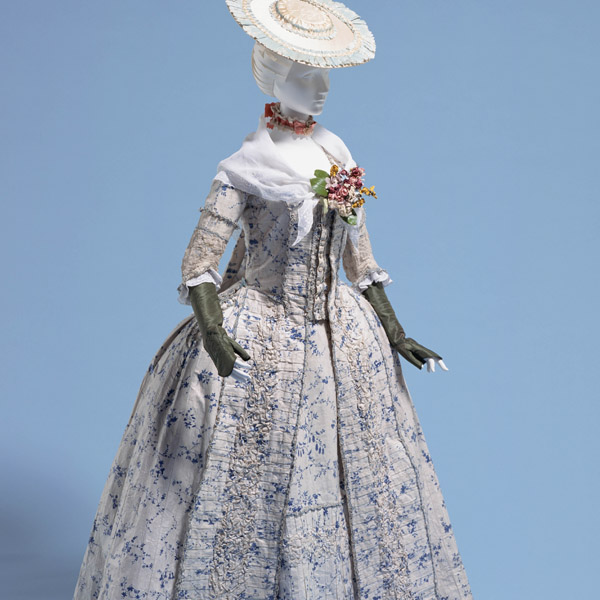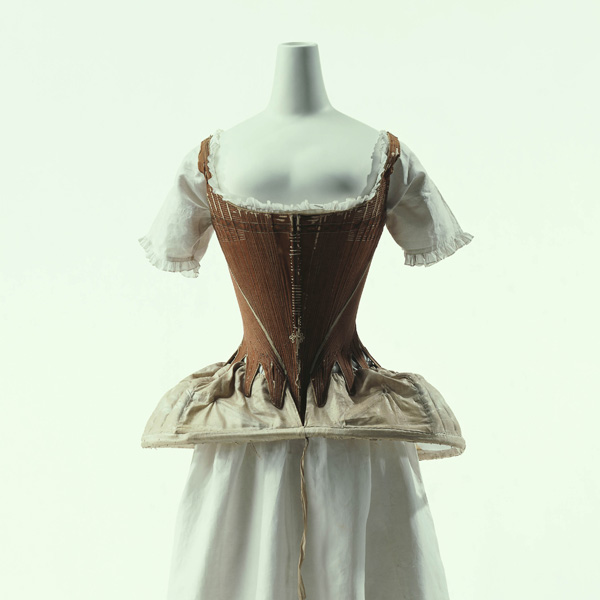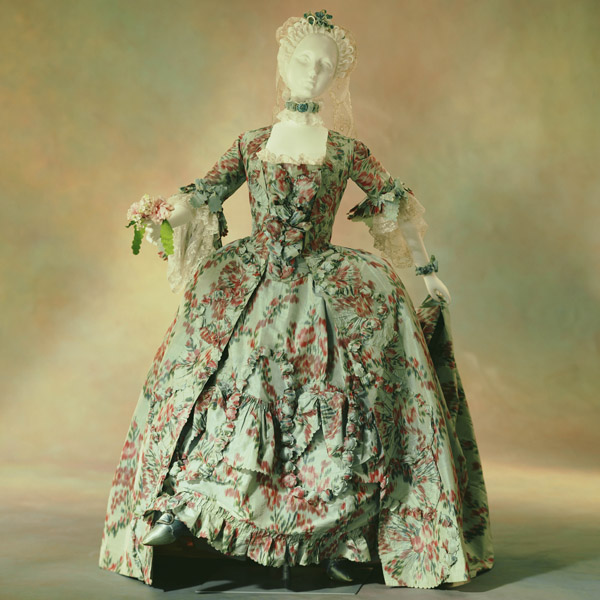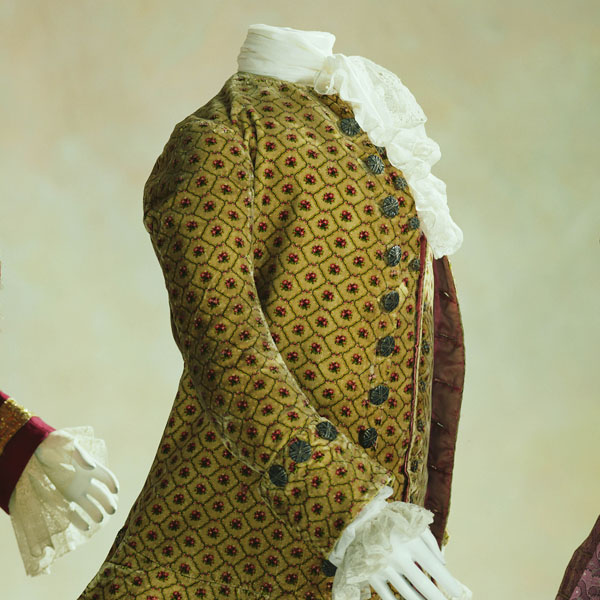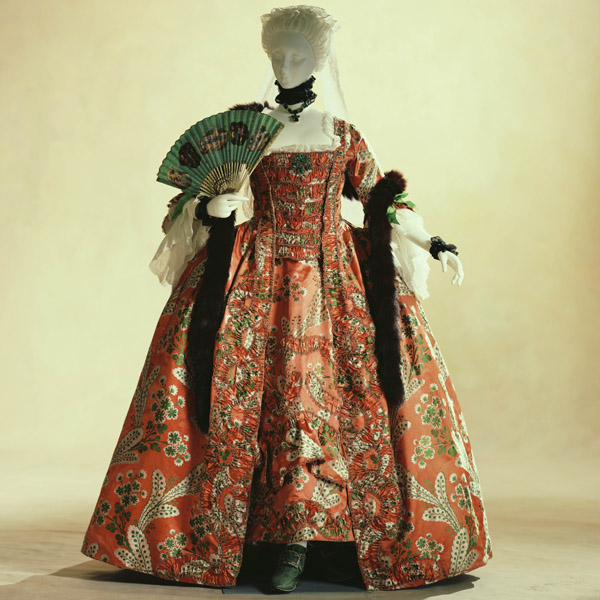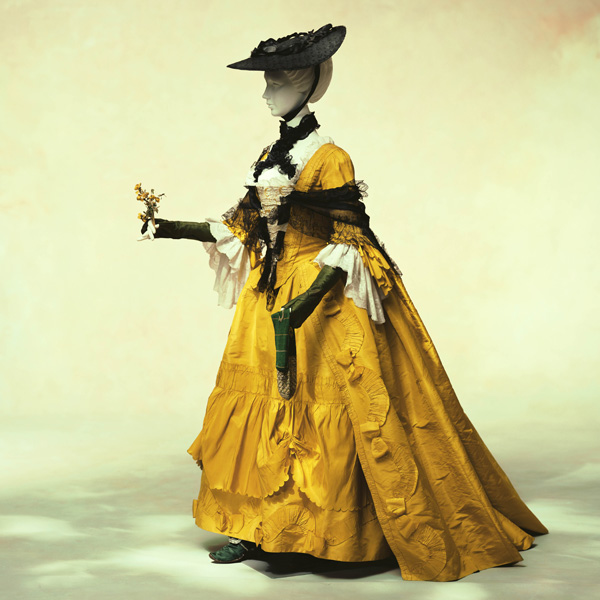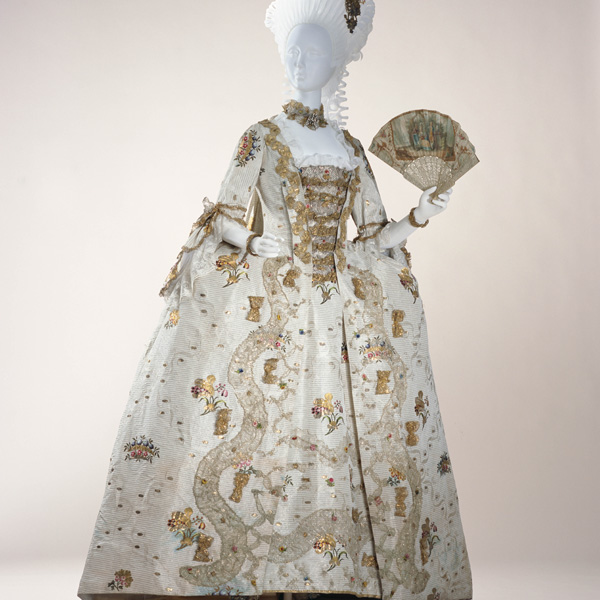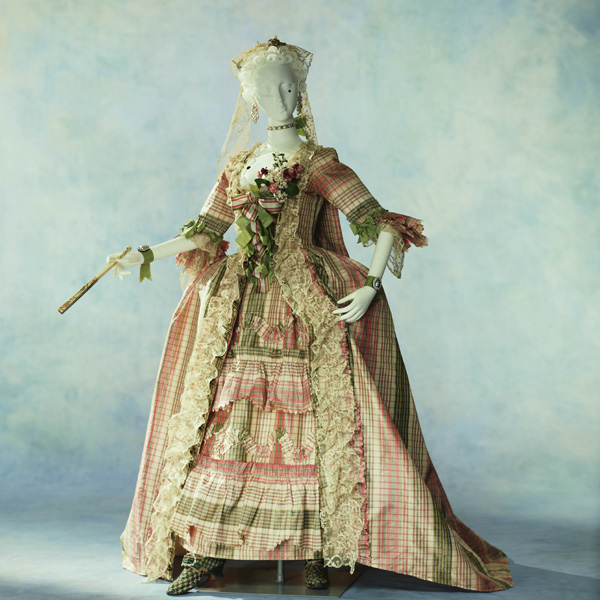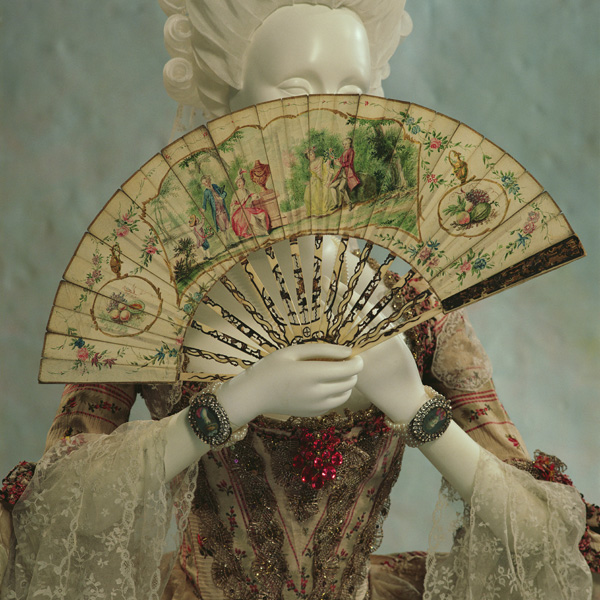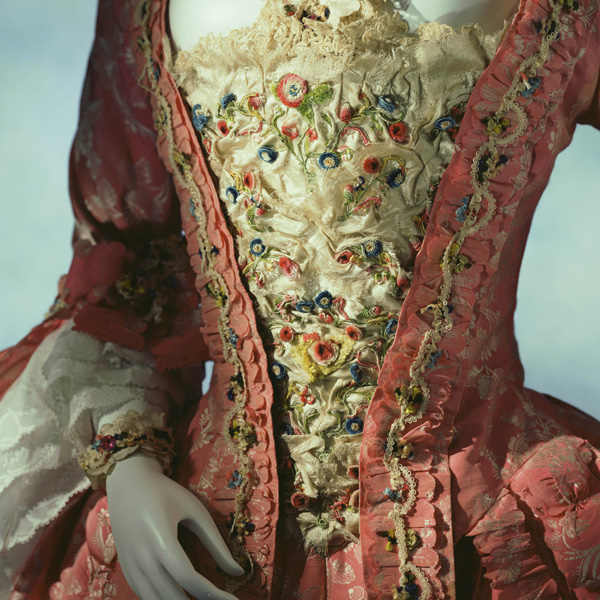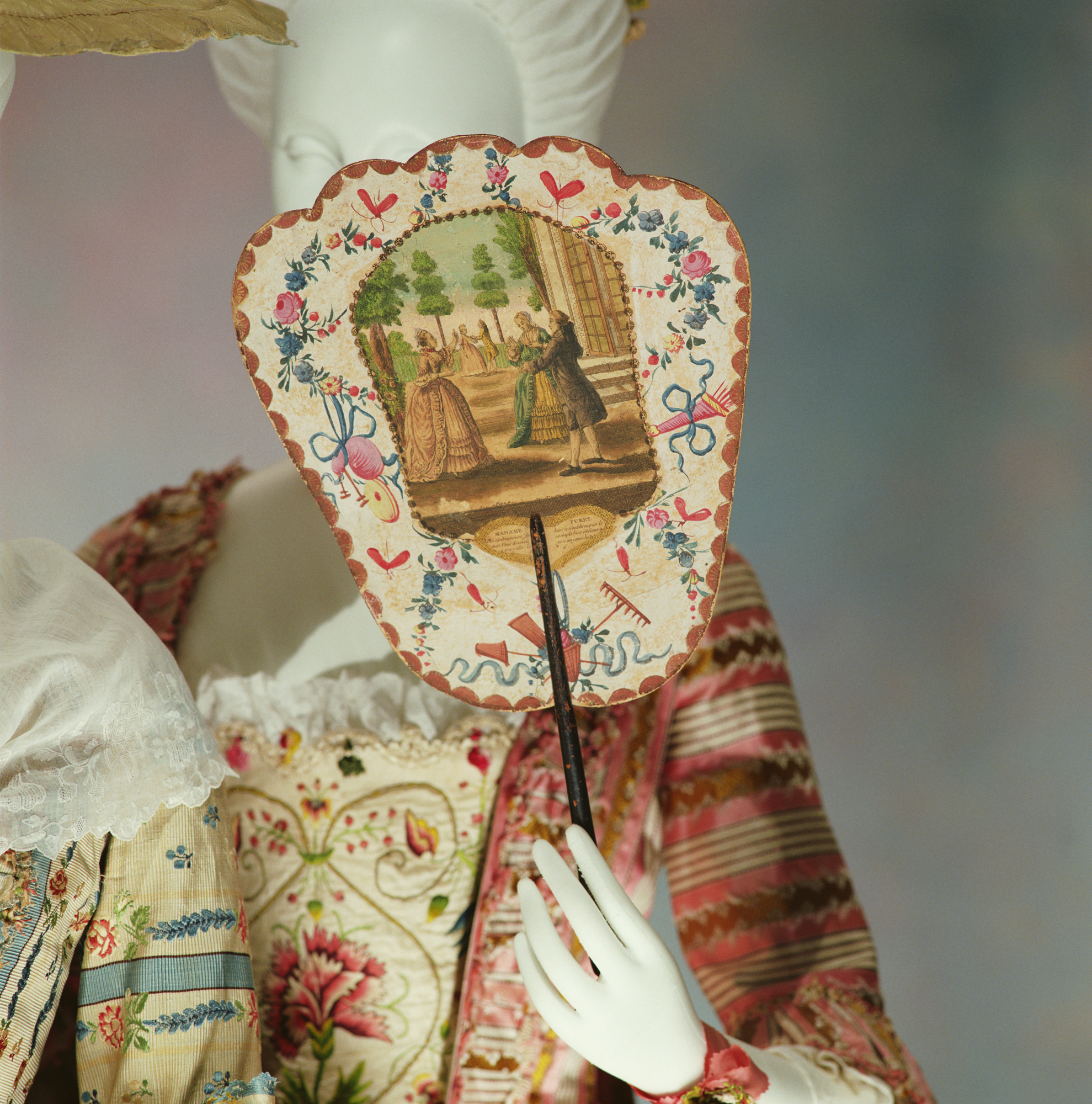
© The Kyoto Costume Institute, photo by Toru Kogure
You can enlarge by putting the mouse cursor on the image.
Handscreen
Late 18th century - France
- Material
- Copper print and hand-paint on paper with a picture of male and female figures and a text surrounded by flowers, ribbons, and agricultural tools on the one side; texts excerpted from a play script on the other side; a dark brown painted wooden handle with a length of about 25.0 cm.
- Dimension
- approximately 43.0 cm (length)/ 25.0 cm (wide)/ 25.0 cm (handle)
- Inventory Number(s)
- AC4347 82-21-10
On the front of this handscreen, there are five figures depicted, chatting to each other and dresses in garments worn by the aristocracy during the 18th century. The text on the reverse is a quote from the script of a play which has been inscribed in two columns, covering the entire screen, and includes the names of the roles in the play, the dialogue and even the stage directions.
The handscreen was used in Europe during the 18th century, mainly to protect the faces of noblewomen from the heat emitted by the fireplace. Women increasingly used this style of screen from around the 17th century, which frequently appeared in fireplace scenes in genre paintings such as those by François Boucher. Of simple construction, consisting of a wooden handle attached to a thick piece of paper, it was not a durable item. Few handscreens have survived, as they were often thrown into the fire once they became worn.
The handscreen is in sharp contrast to the delicate and decorative foldable fan which was used in court as a communication tool.
Many 18th century French handscreens such as this example feature a painting or sentences, while the subject matter is varied, ranging from buildings to maps, fables, and musical scores. Featuring a popular scene from a comedy or comic opera on the front. A quote from the script is featured on the reverse. These handscreens were produced in a series format, each depicting different scenes from the same play.
In this example, too, people are depicted on the front and text on the reverse of the screen. The name of the person and the dialogue on the reverse of the handscreen indicates that it is from Scene 13 of Charles-Simon Favart’s comic opera Isabelle et Gertrude (which premiered in 1765). Below the person on the front of the handscreen is a quote from the protagonist’s dialogue which identifies the relevant scene. In addition, “chez PETIT,” the name of the manufacturer, can be seen below the text on the reverse of the fan. Handscreens created by the same manufacturer are held in the Bibliothèque nationale de France’s collection and form a series of six handscreens, each of which has been numbered. We can assume, from the inscription “6” at the bottom of the reverse side, that this handscreen is also part of a series, with other handscreens coming in sequence before and after this particular screen.
 Digital Archives
Digital Archives